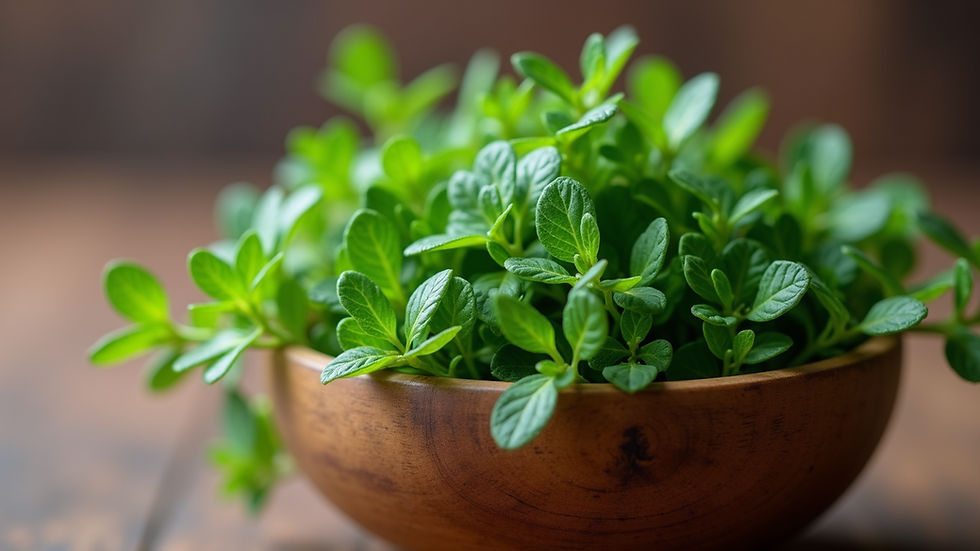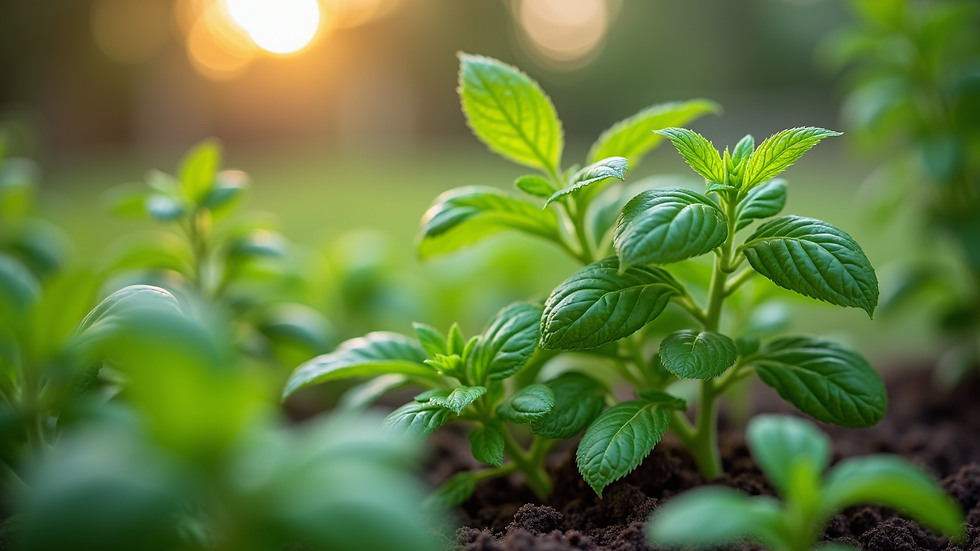A Guide to Using Herbs for Natural Healing
- superiorpro
- Aug 20
- 4 min read
Herbal healing has been practiced for centuries across cultures worldwide. Today, many people are rediscovering the power of plants to support health naturally. Herbs offer a gentle, effective way to address common ailments and promote overall wellness without relying solely on synthetic drugs. This guide explores how to use herbs safely and effectively for natural healing.
Understanding Herbal Healing and Its Benefits
Herbal healing involves using plants and plant extracts to prevent or treat health issues. Unlike conventional medicine, which often targets symptoms, herbal remedies aim to support the body's natural ability to heal itself. This holistic approach can improve physical, mental, and emotional well-being.
Some key benefits of herbal healing include:
Fewer side effects: Herbs tend to be gentler on the body than many pharmaceuticals.
Accessibility: Many herbs can be grown at home or found in local markets.
Cost-effectiveness: Herbal remedies often cost less than prescription medications.
Versatility: Herbs can be used in teas, tinctures, salves, capsules, and more.
Before starting any herbal treatment, it is important to research the herb, understand its effects, and consult a healthcare professional if you have existing health conditions or are pregnant.

How to Use Herbs Safely for Herbal Healing
Using herbs safely is essential to maximize benefits and avoid adverse effects. Here are practical tips for incorporating herbs into your wellness routine:
Start with small doses: Introduce one herb at a time in small amounts to monitor your body's response.
Choose quality sources: Purchase herbs from reputable suppliers or grow your own to ensure purity.
Know the preparation methods: Different herbs require different preparations such as infusions, decoctions, or tinctures.
Avoid mixing herbs without guidance: Some herbs can interact negatively with others or with medications.
Be aware of allergies and sensitivities: Test a small amount on your skin or consume a tiny dose initially.
Store herbs properly: Keep dried herbs in airtight containers away from light and moisture.
Using herbs as part of a balanced lifestyle, including proper diet, exercise, and rest, enhances their healing potential.
What are examples of herbal remedies?
Many herbs have well-documented healing properties. Here are some common examples and their uses:
Chamomile: Known for its calming effects, chamomile tea can help reduce anxiety and improve sleep.
Echinacea: Often used to boost the immune system and reduce the duration of colds.
Ginger: Effective for nausea relief and digestive support.
Turmeric: Contains curcumin, a powerful anti-inflammatory compound beneficial for joint health.
Peppermint: Helps soothe digestive discomfort and headaches.
Lavender: Used in aromatherapy to reduce stress and promote relaxation.
Calendula: Applied topically to heal minor cuts, burns, and skin irritations.
These herbs can be consumed as teas, capsules, or applied as oils and salves depending on the condition being treated.

Incorporating Natural Herbal Remedies into Daily Life
Integrating herbs into your daily routine can be simple and enjoyable. Here are some actionable ideas:
Morning herbal tea: Start your day with a cup of green tea or ginger tea to energize and aid digestion.
Herbal infusions for relaxation: Drink chamomile or lavender tea in the evening to unwind.
Herbal skincare: Use calendula or aloe vera-based creams to nourish and protect your skin.
Cooking with herbs: Add fresh herbs like basil, rosemary, or thyme to meals for flavor and health benefits.
Herbal steam inhalation: Use eucalyptus or peppermint leaves in hot water to relieve congestion.
For those interested in exploring more, natural herbal remedies offer a wide range of products and information to support your herbal healing journey.
Tips for Growing Your Own Healing Herbs
Growing your own herbs is rewarding and ensures you have fresh, chemical-free plants at your fingertips. Here’s how to get started:
Choose herbs suited to your climate: Basil, mint, and thyme are easy to grow indoors or outdoors.
Use quality soil and containers: Well-draining soil and pots with drainage holes prevent root rot.
Provide adequate sunlight: Most herbs need 6-8 hours of sunlight daily.
Water appropriately: Avoid overwatering; most herbs prefer slightly dry soil between watering.
Harvest regularly: Pinch off leaves to encourage bushier growth and prevent flowering.
Learn about each herb’s needs: Some herbs like lavender prefer drier conditions, while others like mint thrive in moist soil.
Growing herbs not only supports your health but also connects you with nature and the healing process.

Embracing Herbal Healing for a Healthier Life
Herbal healing offers a natural, accessible way to support your health and well-being. By understanding how to use herbs safely, exploring common herbal remedies, and incorporating them into your daily life, you can harness the power of plants to promote balance and vitality. Whether you choose to grow your own herbs or explore natural herbal remedies, the journey toward wellness through herbal healing is both empowering and enriching.









Comments